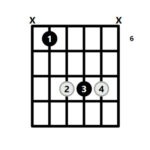Guitar Attenuators are often seen as a necessary evil for guitarists who love the sound of cranked tube amps but need to play at bedroom levels. The core promise of a guitar attenuator is simple: reduce the volume of your amplifier without drastically changing its tone. But how well do they actually work, and what compromises are involved? This review delves into the practical experience of using a guitar attenuator, focusing on the trade-offs between volume reduction and tonal fidelity.
One of the primary functions of a guitar attenuator is, undoubtedly, volume control. They effectively bring down ear-splitting amplifier volumes to levels suitable for home practice or late-night sessions. In this aspect, most attenuators, including the OX, deliver on their promise. However, the crucial question for any discerning guitarist is the impact on tone. Unfortunately, any form of attenuation will alter the sonic characteristics of your amplifier to some degree.
The most noticeable change when using a guitar attenuator is often a perceived “squished” or compressed sound. This isn’t the smooth compression you might get from a pedal or studio processor; instead, it can manifest as a spongier feel and a slightly fizzy or unfocused edge to the tone. The dynamic response of the amplifier also suffers, which is almost inevitable when reducing volume significantly. Even at less extreme attenuation settings, this loss of dynamic range can be apparent.
Despite these tonal alterations, a good guitar attenuator should still preserve the fundamental character of your amplifier. The OX, for example, does a commendable job in this regard. You can still effectively use your amp’s controls to dial in your desired sound while the attenuator is engaged. This means that the attenuator acts as a volume control without completely masking the inherent tonal qualities of your amplifier, which is a significant advantage for practice purposes.
Beyond simple attenuation, some devices, like the OX, offer additional features such as microphone and cabinet simulations. These can be incredibly useful if you lack access to a dedicated recording space with microphones and cabinets. While digital simulations may not perfectly replicate the sound of a professionally miked cabinet in a treated room, they have come a long way. For direct recording or headphone practice, these simulations can provide a surprisingly realistic and convenient alternative, especially when considering the technological advancements in recent years. However, for critical recording situations, many guitarists still prefer the organic sound of a real cabinet, room, and microphones.
Ultimately, the experience of using a guitar attenuator is often about finding the least objectionable compromise. No attenuator will maintain perfect tonal transparency at heavily reduced volumes. Instead, they should be viewed as a practical tool to enable tube amp practice at lower volumes. While not ideal for critical recording or replacing the full experience of an unattenuated amplifier, a guitar attenuator becomes a valuable asset for home practice, allowing you to enjoy the core tone of your tube amp without disturbing others. For guitarists seeking to unleash their tube amps at home, a guitar attenuator remains a necessity, accepting its inherent trade-offs to achieve a workable practice volume.

